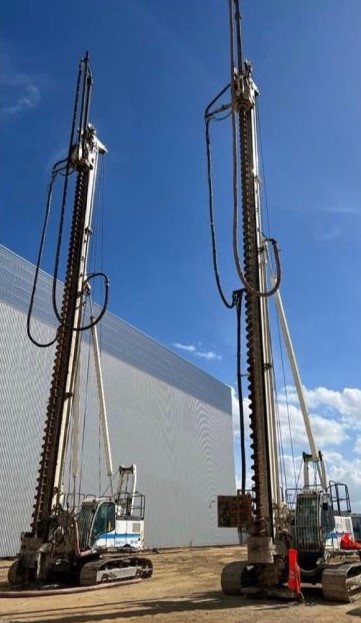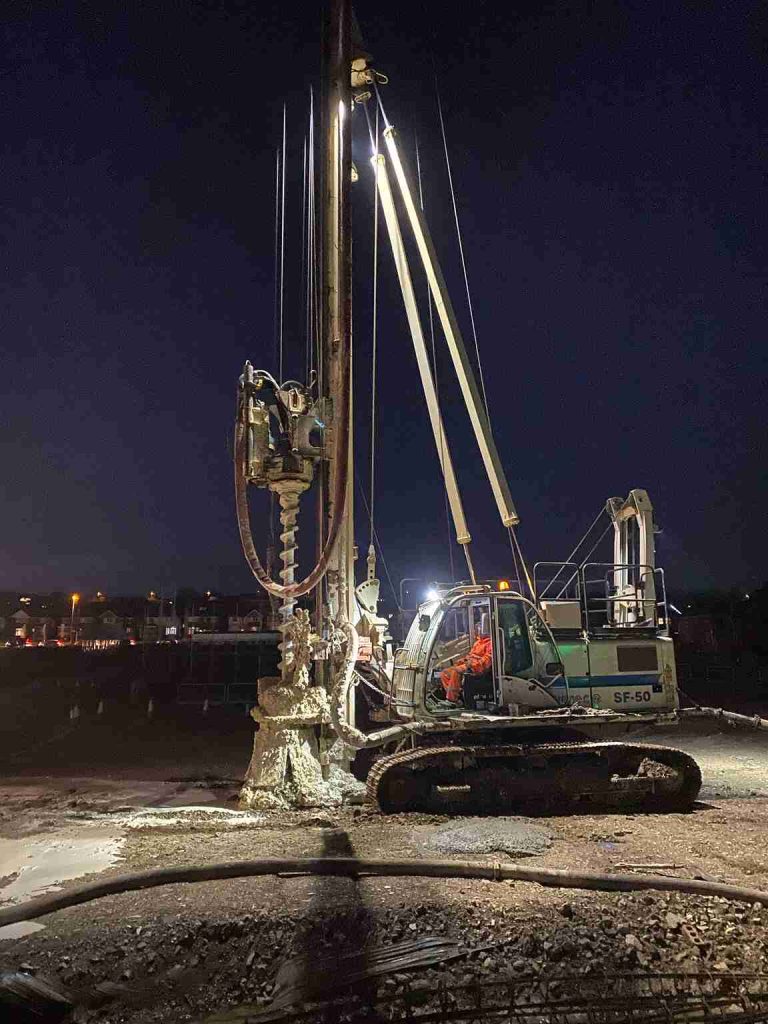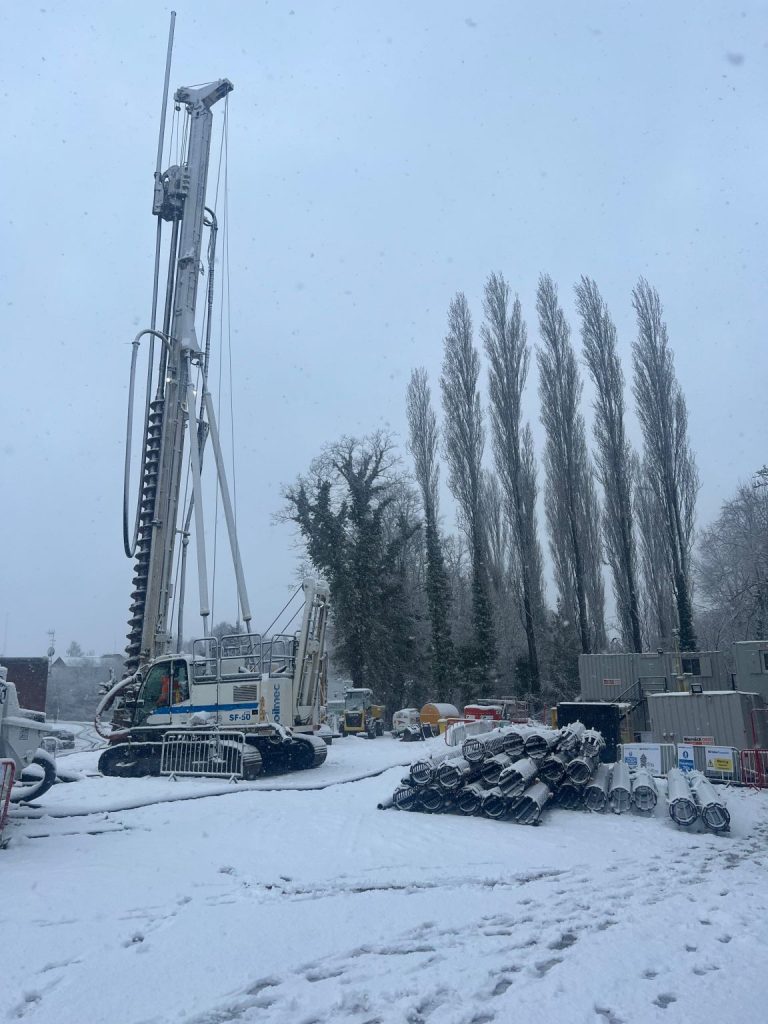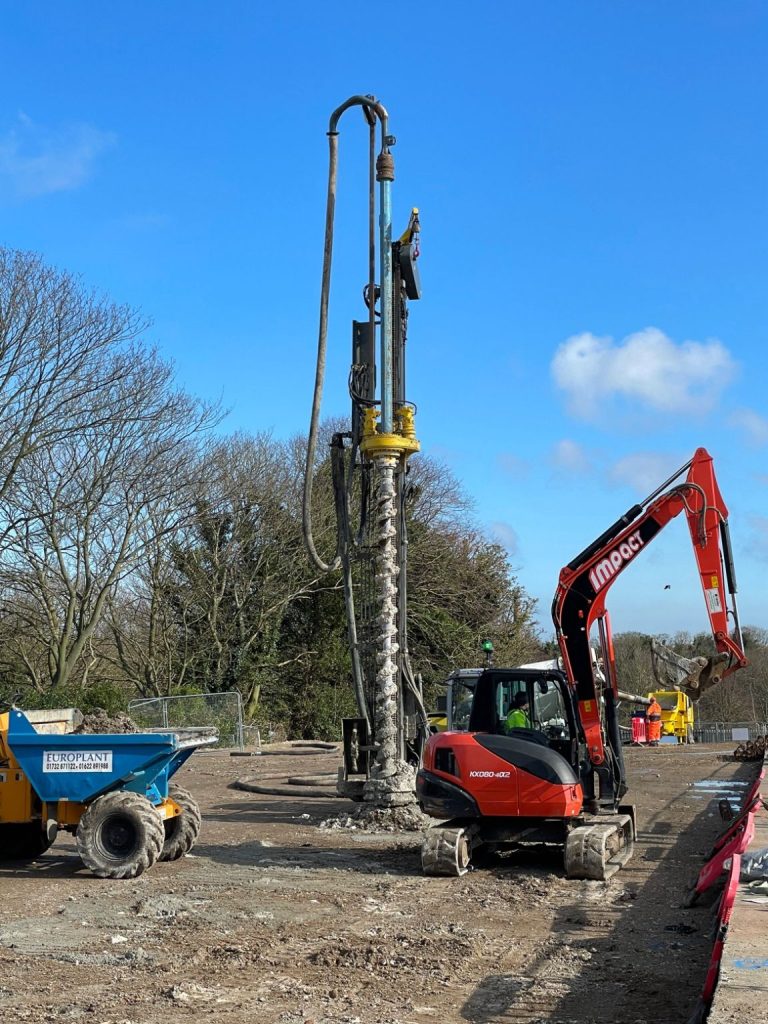How Deep Do Piles Need To Be? Detailed Guide
Piling foundations is a reliable, durable construction method. However, success depends upon proper surface preparation. So, if you’re a piling contractor, a piling specialist, or involved in a construction project, you need to know how piling foundations are prepared on a surface.
Pile depth has no upper limit because it’s dependent on pile size, the type of site, and other factors discussed in this blog.
Why Is Pile Depth Important?
Pile foundations transmit a building’s load to deeper, more stable ground layers over which surface soils cannot support a building. Finding the right depth is important because it keeps the structure from becoming unbalanced and foundation failure from occurring.
Factors That Determine the Pile Depth
The depth of piles varies depending on multiple factors, but two primary considerations include:
Structural Engineers Loading Required
Structural engineers calculate the weight of the building and the load that must be transferred to the ground. The design and function of the building form the basis of this load.
Smaller piles are required for larger and heavier structures, such as commercial buildings and high rises; smaller residential projects only require shallower piles.
Soil Type
At the construction site, pile depth is largely governed by soil type. Clay, sand, ballast, rock, and alluvium each have different load-bearing capacities. For instance, clay and loose sand piles tend to be deeper, while solid rock will need shorter piles.
To determine the optimal pile depth, a soil investigation using in-situ tests and lab testing is required to evaluate the soil’s makeup, strength, and stability.




Mon–Fri: 8:00am-6:00pm
Skilled Labour
Customer Satisfaction
Advanced Machines
Typical Depths of Common Piling Methods
Piling methods are used as may be dependent on site conditions and project requirements. Below are some common techniques, along with their typical depth ranges:
Driven Piles
- Installation Method: A pile driver drives a steel, concrete, or timber piled into the ground. This is a quick and suitable method for soil conditions.
- Typical Depth Deep: Some can go to 10 to 30 meters, but depending on the project, some can
go even deeper.
- Advantages: Easy to install and inexpensive for most medium and large-scale projects.
Bored Piles
- Installation Method: A pile is drilled into the ground, and concrete is put in. This method often requires harder soil or minimal vibration and is often used on the site.
- Typical Depth: Depending on the soil, it could be 15 to 50 meters or more.
- Advantages: It creates less noise and vibration and is suitable in urban or sensitive areas.
Screw Piles
- Installation Method: Specialised machinery screws steel piles with helical blades into the ground for this type of work. This application method is often used for lighter loads and softer soil.
- Typical Depth: Discover the mesmerising underwater world at depths varying from 2 to 15 meters, where you’ll encounter vibrant marine life and stunning coral formations
- Advantages: Installations can be fast, easy, reversible, or removed anytime.
Sheet Piling
- Installation Method: Thin steel sheets are also pushed tightly into the ground to create retaining walls, typically used in deep excavations and waterfront projects.
- Typical Depth: This area’s depth ranges from 5 to 25 meters, making it ideal for snorkelling, shallow diving, and underwater photography. Diverse marine life and vibrant coral formations enrich the underwater experience.
- Advantages: The stabilisation and lateral support medium provides excellent stability for activities like basketball or tennis, reducing the risk of ankle sprains and related injuries.
What is the Installation Time of Piling
How long it takes to install piles depends on many things, such as the type of piling method used, the number of piles installed required, and site complexity. Typically:
- Smaller Projects: Piling for a single residential property can take between 1 and 3 days to install.
- Larger Projects: Commercial buildings, bridges, and high-rises can require installation for 1 or 4 weeks or somewhere in between, depending on size and the number of piles required.
Difficult soil conditions or underground obstructions may extend installation time. However, practical machinery and seasoned contractors can make things happen quickly.
Pile Installation Depth Factors of Cost
The cost of piling installation is influenced by several key factors, including:
Soil Conditions
Deeper piles and more advanced piling methods may be required for difficult conditions like soft clay or saturated zones, which increase construction costs.
Pile Length and Diameter
More materials mean more material and labour costs. In addition, deeper piles require heavier equipment and expertise.
Type of Piles
The costs of different types of piles are different. One example is that screw piles are generally cheaper to install than bored piles, but bored piles may be needed if a project requires depths beyond the mud line.
Site Accessibility
The requirement for smaller or specialised equipment may also increase costs for hard-to-reach sites or sites in densely populated urban areas. Restricted working conditions can also slow installation, further adding to labour costs.
Load Requirements
When dealing with heavier loads, stronger and larger piles are essential to support the weight. This, in turn, increases the requirement for additional materials and labour, resulting in higher overall project costs.
Local Regulations
It may also be necessary to meet more rigorous requirements of local building codes and codes, to use more expensive piling systems, or deeper foundations in regions susceptible to seismic activity or flooding.
Conclusion – No One-Size-Fits-All Answer
There is no definitive answer to how deep piles must be, as it depends on project-specific requirements like load demands and soil conditions. Proper soil investigation, engineering assessment, and choosing the right piling method are essential for determining the correct depth and ensuring the long-term stability of the structure.
If you need more information or want to undertake high-quality groundwork with a strong foundation using the latest equipment and a specialised team in the UK, contact the local experts at Alpha Piling Specialists, who have over 20 years of experience in the field.
